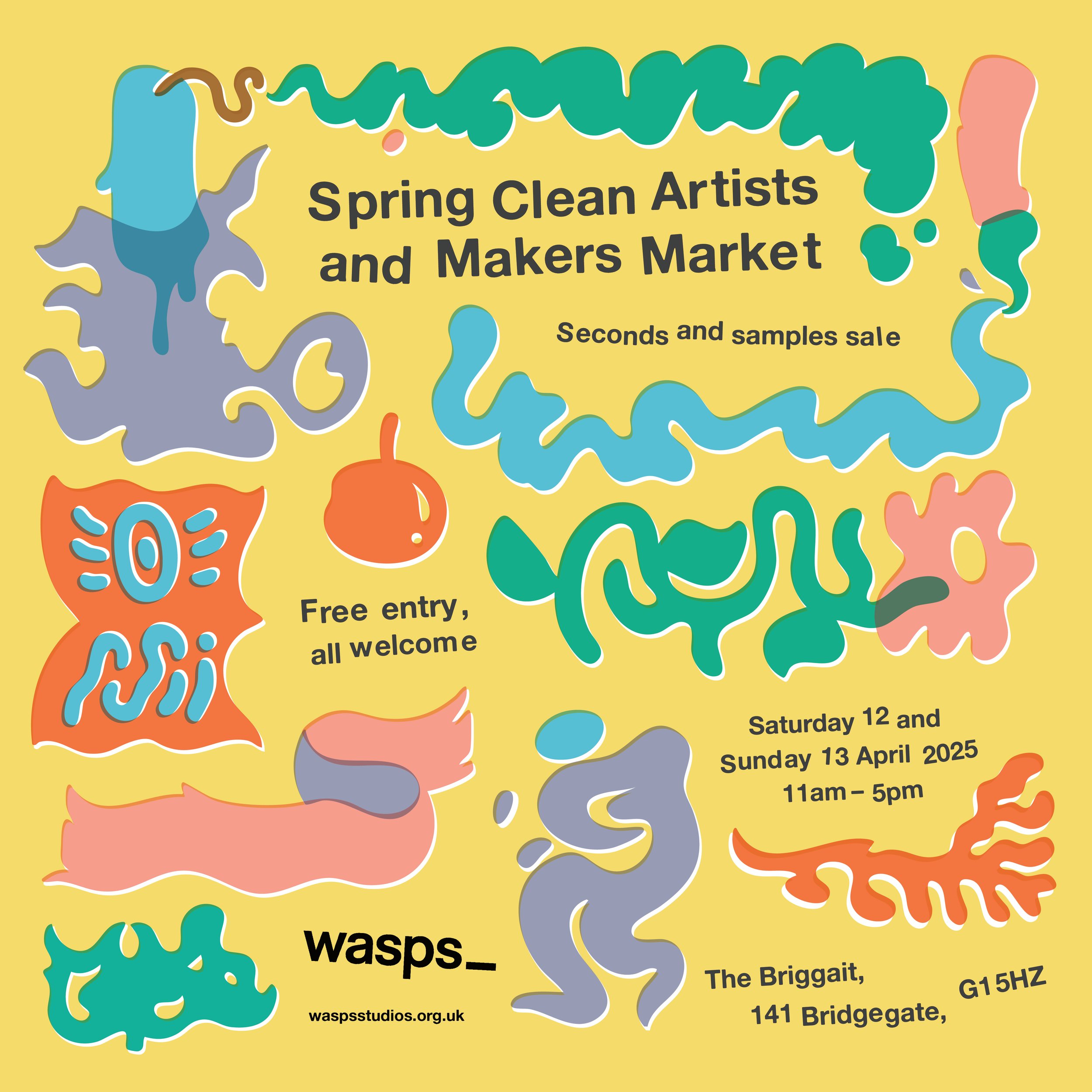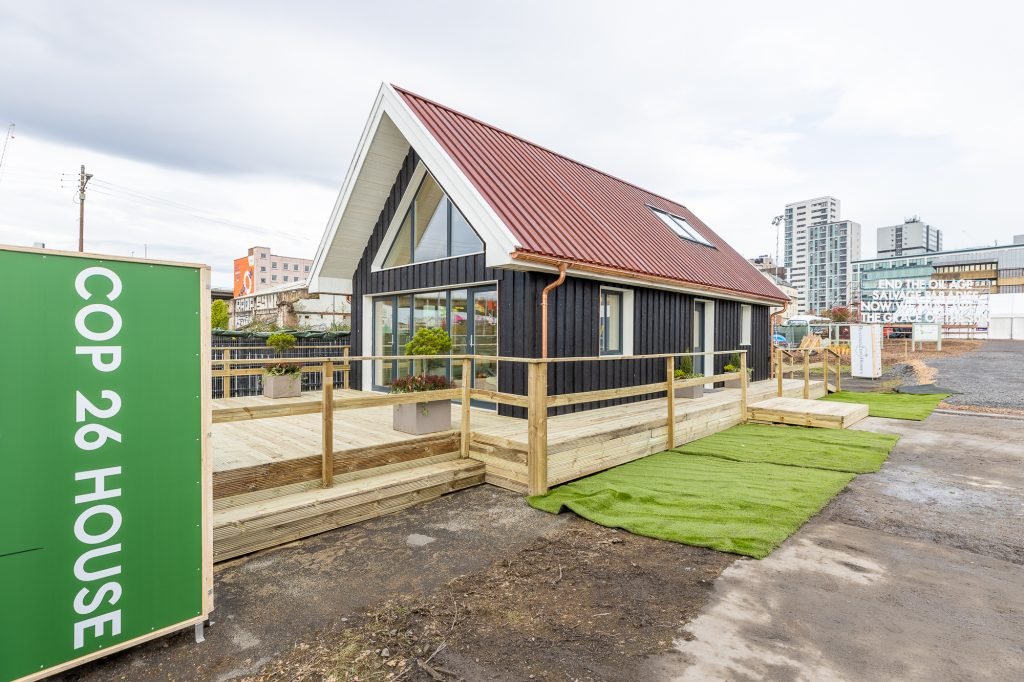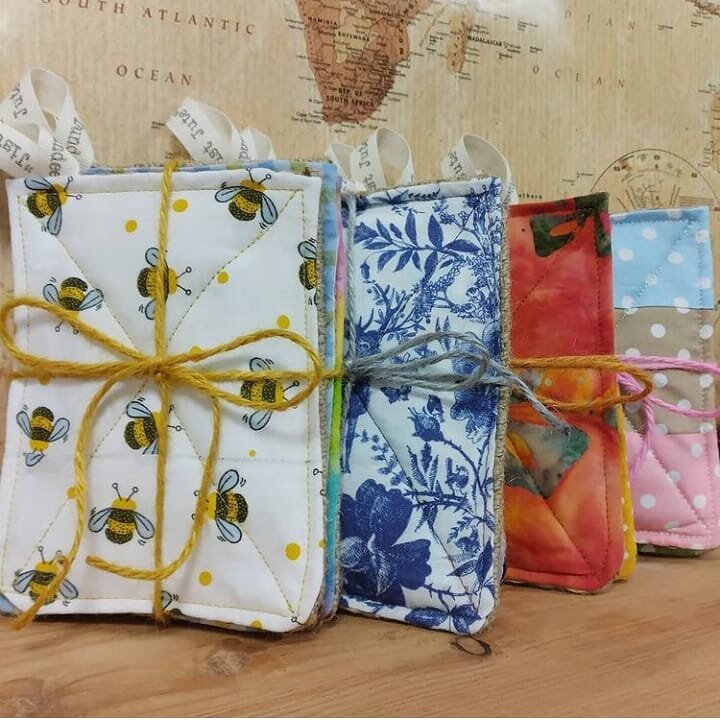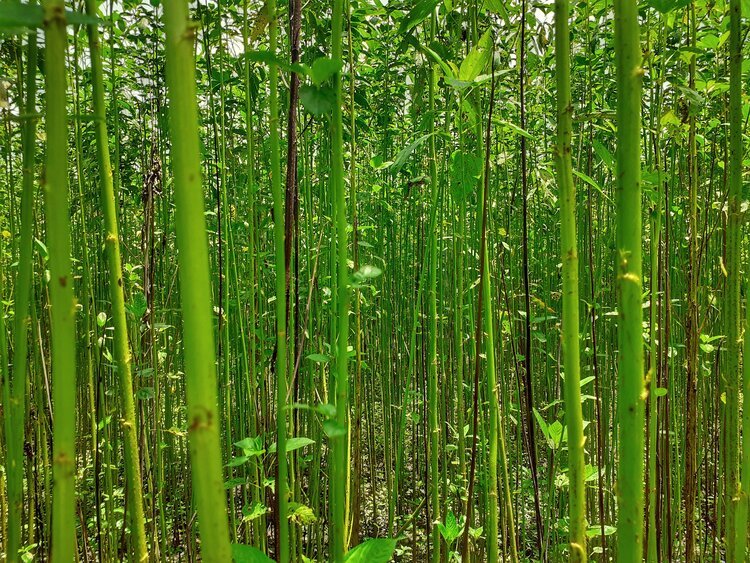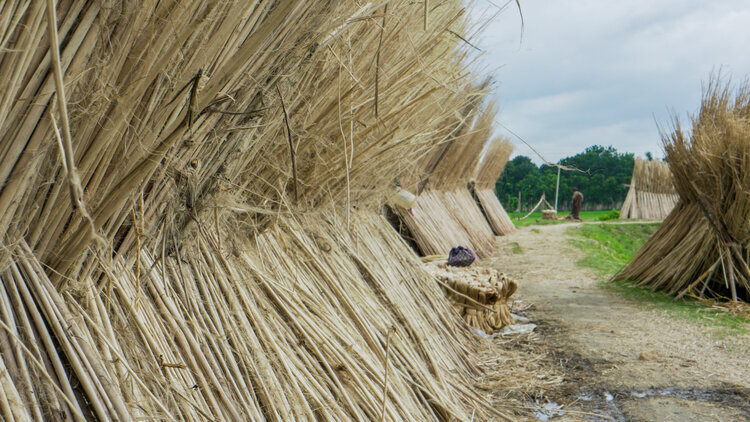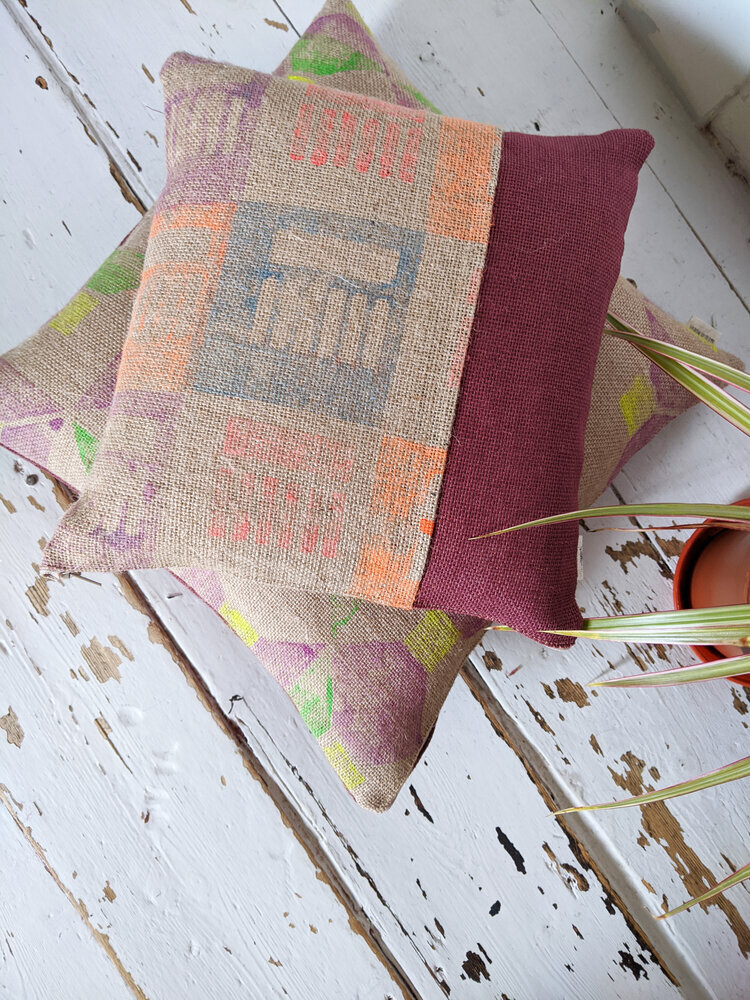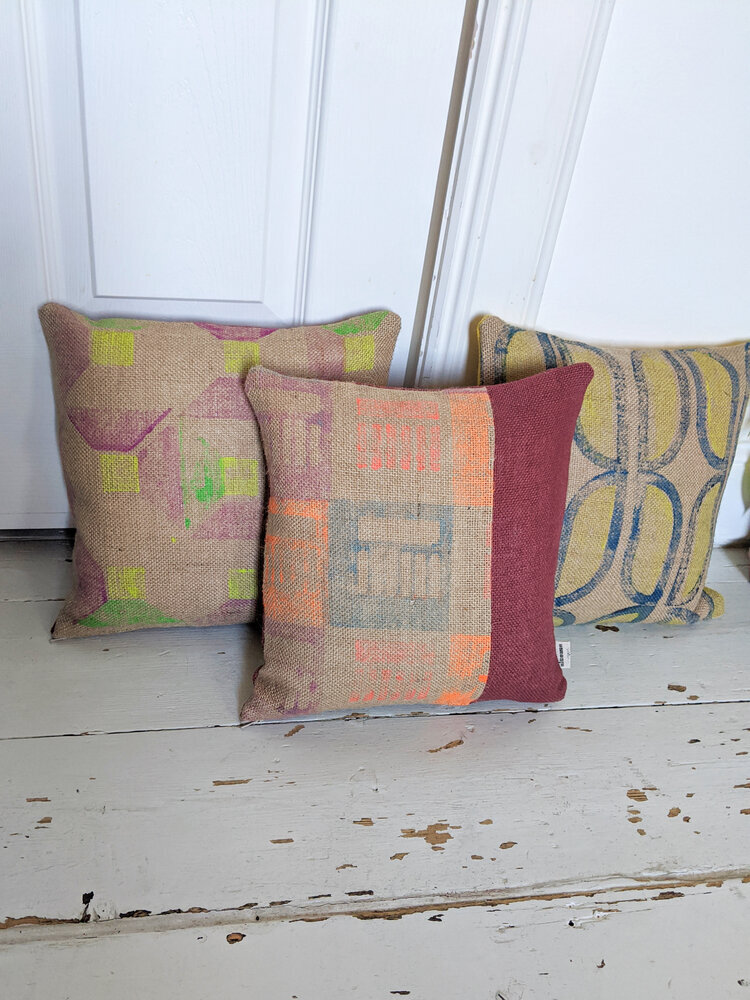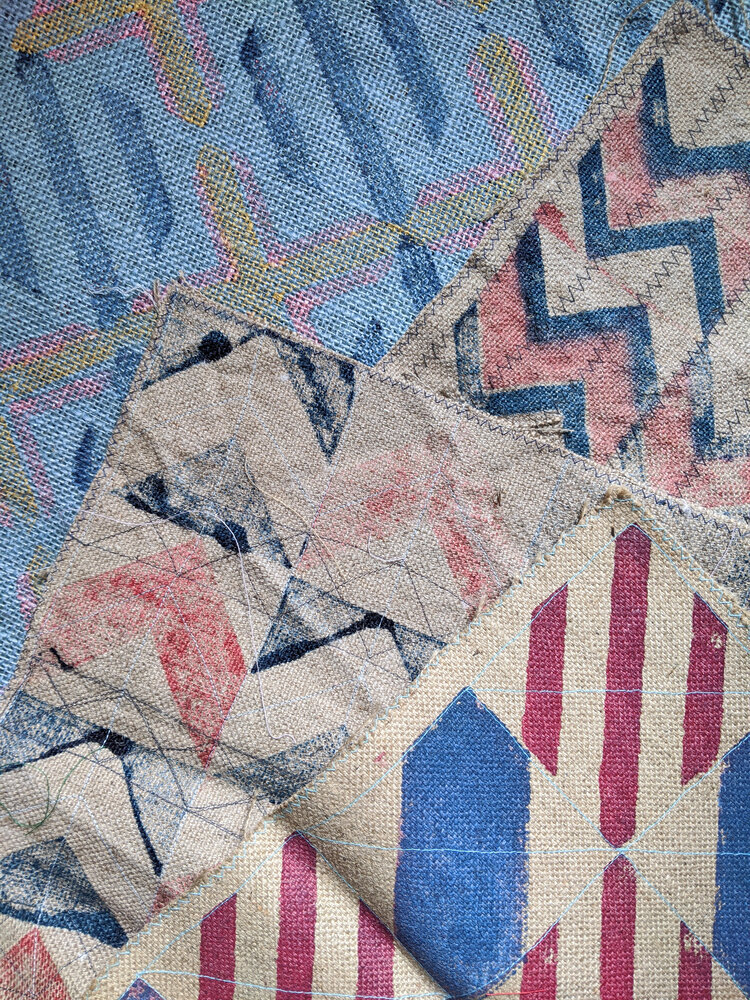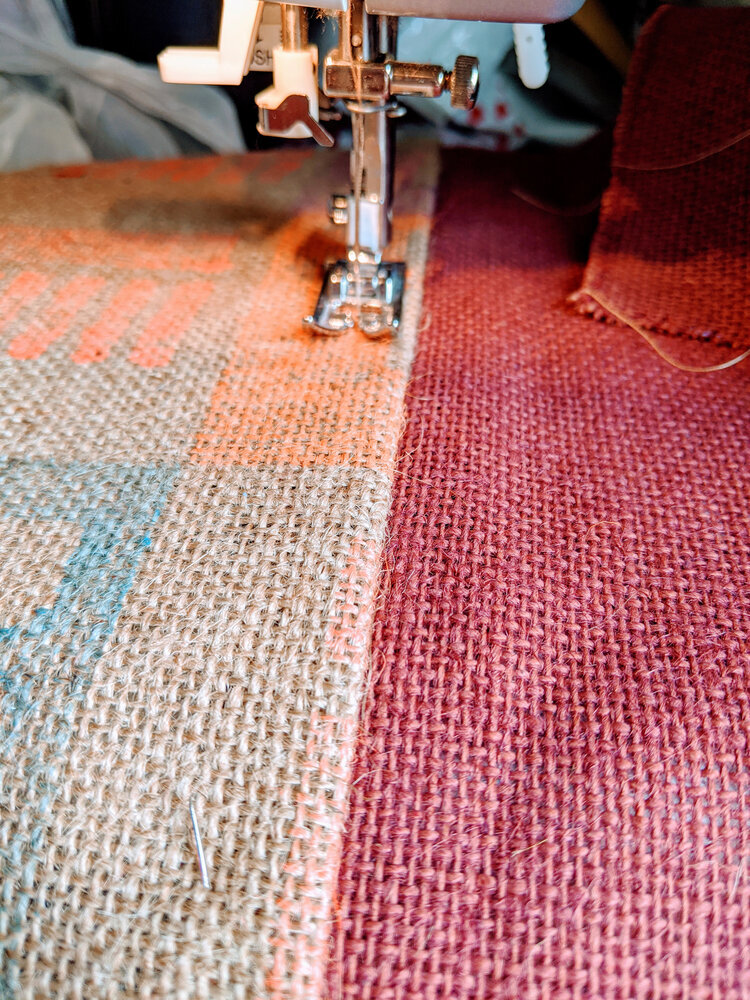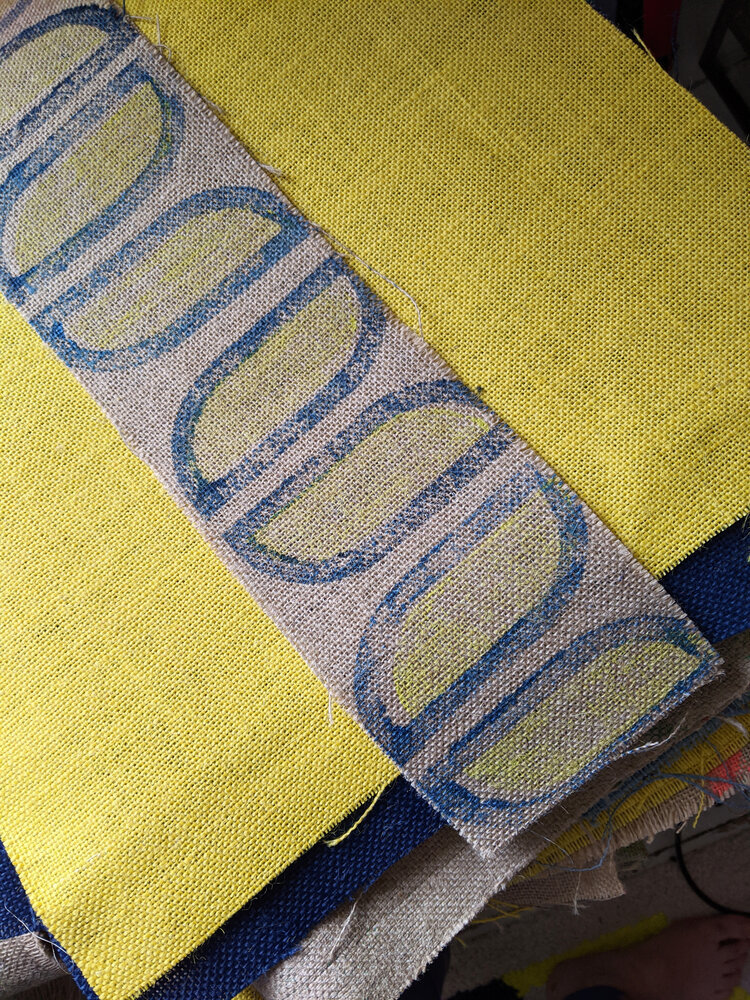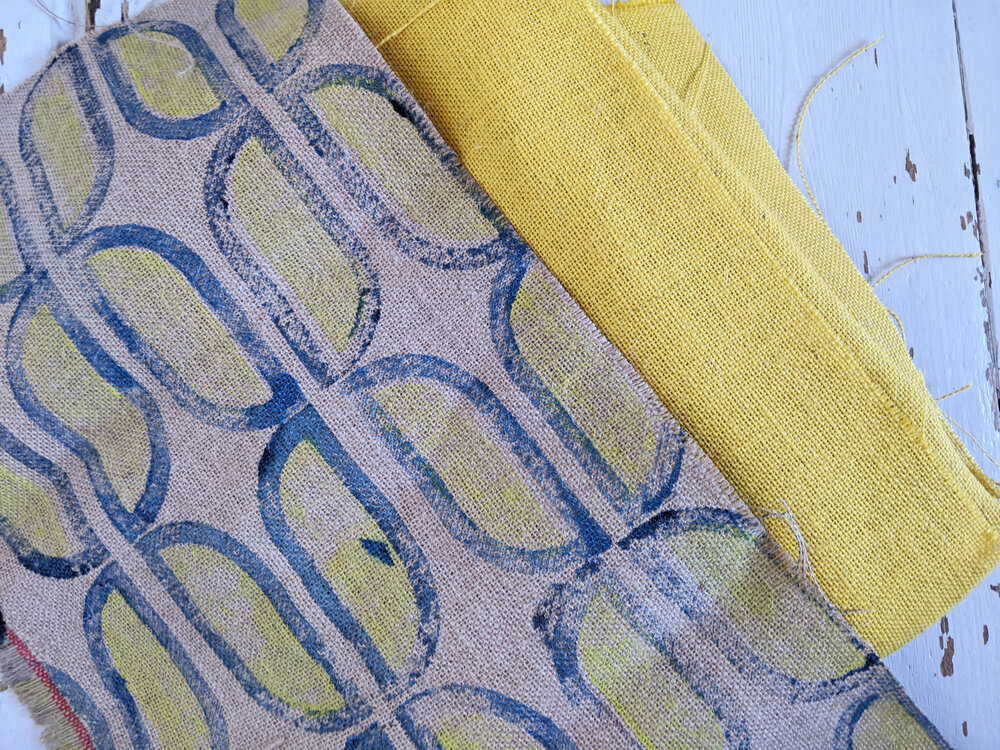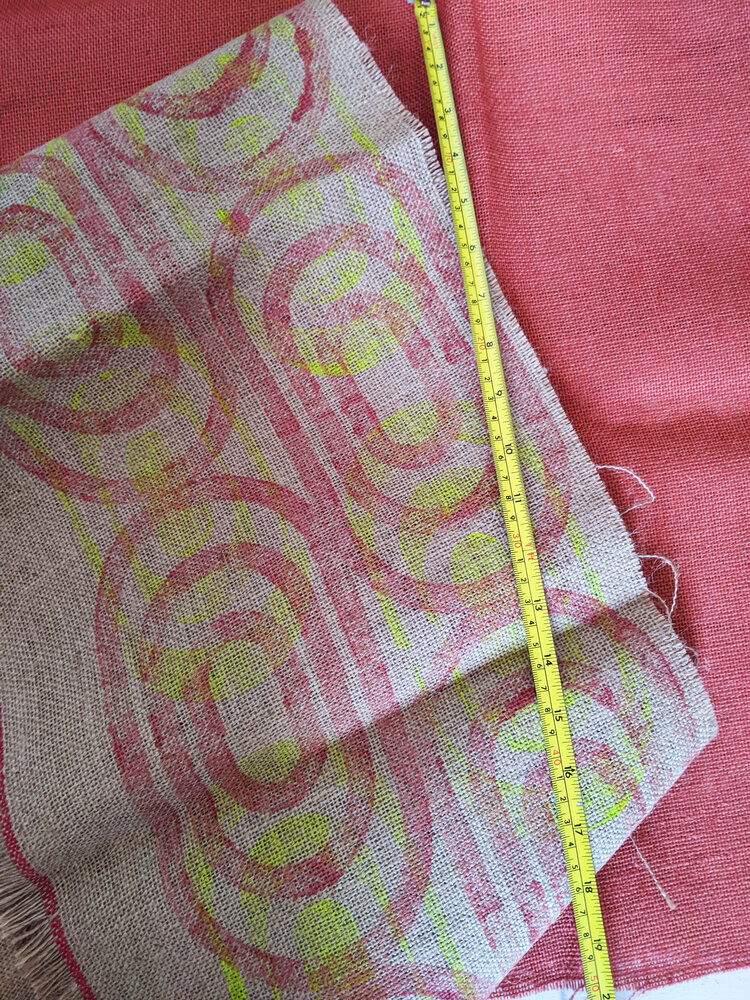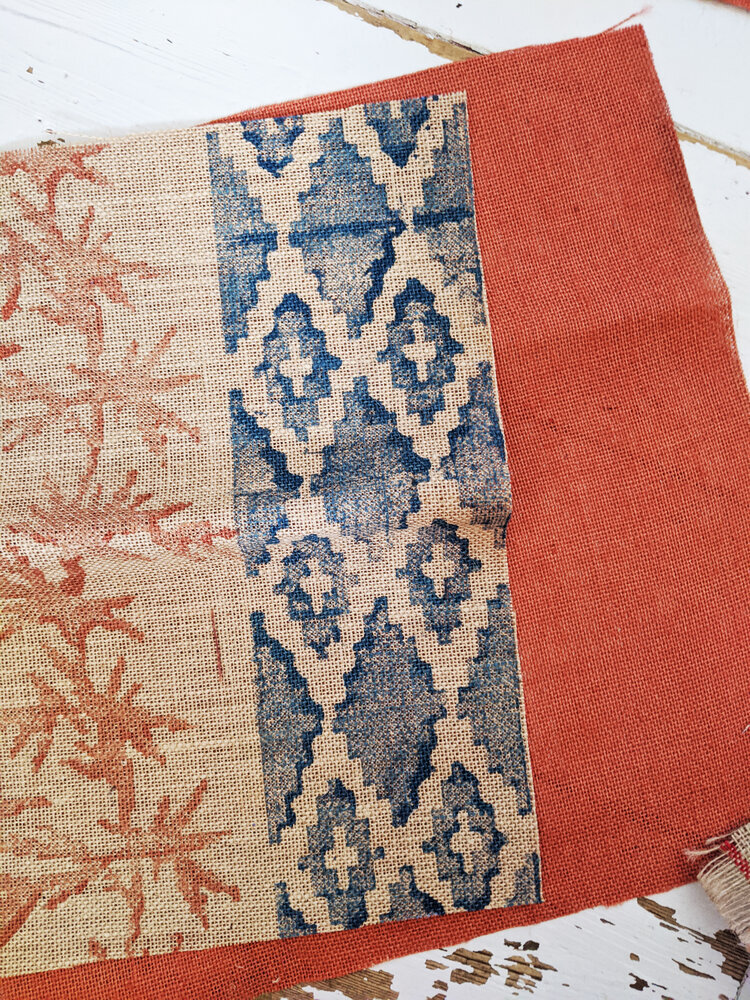at zitozza, every pattern begins with a system — not a sketch. the blocks are precision-cut, CAD-designed, and made to combine, rotate, and repeat without friction. that logic underpins everything we do, from large-format rugs and cushions to smaller, quieter formats that have recently made their way into focus: mounted prints and cards.
these small editions aren’t an afterthought. they’re made from the same blocks, printed with the same hands, and follow the same structural rhythm as the rest of our textiles. the difference is just scale. they’re printed on the same jute, cotton, linen, and wallpaper from the studio. leftovers perhaps, offcuts, yes, but purposeful ones. every piece is cropped and composed with the same care.
the mounted prints in fact are slightly different and more purposeful: i have been using jute wallpaper for some of these. not mine, but a very high-end, premium line from an upmarket company that never made it to commercial production. they came in six deep, beautiful base colours with a tactile surface for block printing. colourful, textured already, so i turned them quietly architectural too. they became a foundation for many of our early framed pieces.
it also gave me ideas for using my own wallpaper off-cuts too. because, by the way, you can have zitozza prints on wallpaper now too! okay, well not on jute (yet…!) but on a simple fibre-based, non-woven, uncoated paper. if you visited clerkenwell design week earlier this year, you may have seen them on display and they were not experiments, but a clear suggestion of where this pattern system should really be. and what’s left over? it can go in a mounted frame. or a card.
the cards followed the prints soon after. i designed them to be picked up at markets, to work as a “sample print” (and a not-so-hidden purpose of furthering our zero-waste goals) but also with an intent to be gifted, in an abstract way. none of them says happy birthday or congrats on passing your driving test, obviously. they’re modernist and abstract with the idea that you can fill in the blank and give it your own meaning.
each one is printed on real fabric: linen remnants, recycled cottons, and the same wallpaper offcuts used elsewhere in the studio. they’re not mass-produced print or throwaways, they’re fragments of the larger system. small, tactile, and considered.
each piece is part of the same modular language, it is just trimmed down. whether framed, posted, or pinned to a wall, they carry the same structure, the same design logic, and the same attention to material. not simplifications, just a scaled down versions of the same idea - construct, play, decorate!




